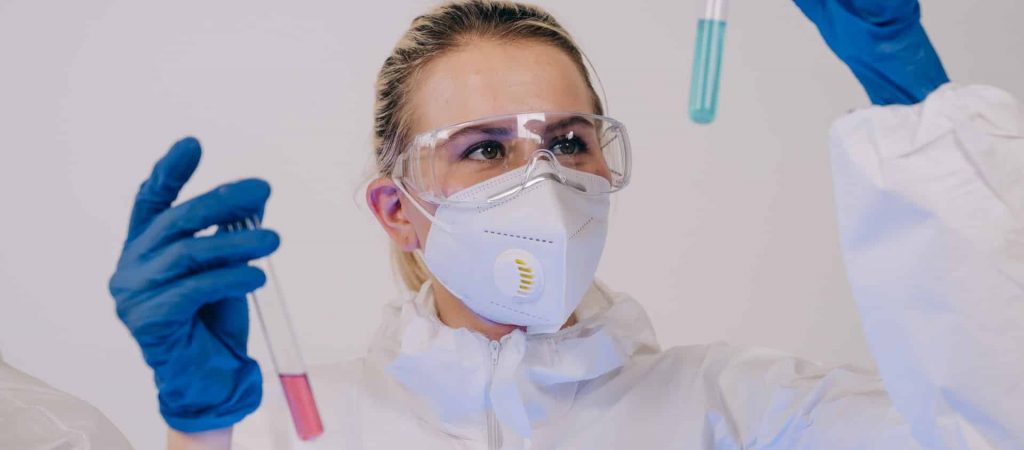
ClO₂ structure and its reactions
Although Chlorine Dioxide (ClO₂) shares a similar name with chlorine, its radical molecular structure gives it unique reactivity that sets it apart not only from chlorine but also from other oxidising agents like ozone.
Unlike chlorine or hypochlorous acid, which typically react through electrophilic substitution or addition (often creating chlorinated organic by‑products), Chlorine Dioxide primarily acts via free radical electrophilic abstraction. This mechanism results mainly in the formation of oxycarbonyl compounds rather than toxic chlorinated organics.
Key Reactivity Characteristics
-
Rapid Oxidation of Target Compounds
ClO₂ efficiently oxidises:-
Phenolic compounds
-
Secondary and tertiary amines
-
Organic sulphides and disulphides
-
Certain polycyclic aromatic hydrocarbons (e.g., benzopyrene, anthracene, benzo[a]anthracene)
-
-
Minimal Reaction with Non‑Targets
Unlike chlorine, ClO₂ generally does not react with:-
Double carbon bonds
-
Aromatic cores
-
Quinonic or carboxylic structures
-
Primary amines and urea
-
This selectivity makes Chlorine Dioxide highly effective in practical water treatment while avoiding the formation of persistent, harmful by‑products.
Applications Across Pollutants and Industries
With over 25 years of applied expertise, ChloroKlean has demonstrated the wide utility of Chlorine Dioxide across industries. Below are some of its most impactful applications.
Aldehydes
-
Problem: Widely produced in industries such as photographic processing, where formaldehyde is a major component.
-
Solution: ClO₂ oxidises aldehydes into their corresponding carboxylic acids, eventually breaking them down into formic acid and carbon dioxide.
-
Example: Paraformaldehyde can be fully depolymerised and eliminated through ClO₂ oxidation.
Amines and Mercaptans (Odour Control)
-
Problem: Strong odours from mercaptans and amines in chemical, petroleum, animal rendering, and food industries.
-
Solution:
-
Between pH 5–9, 4.5 parts ClO₂ oxidise 1 part mercaptan (as sulphur) into sulphonates, removing odour.
-
10 parts ClO₂ oxidise 1 part secondary amine, eliminating amine odours.
-
-
Benefit: Rapid, complete odour neutralisation without generating harmful by‑products.
THM Precursors
-
Problem: Chlorine reacts with humic and fulvic acids to form trihalomethanes (THMs)—carcinogenic by‑products.
-
Solution: ClO₂ oxidises THM precursors, rendering them non‑reactive and preventing THM formation.
-
Practical Benefit: Pre‑treatment with ClO₂ drastically reduces THM levels when chlorine is used later in treatment.
Pesticides
-
Problem: Toxic pesticides like Methylchlor (DMDT) and parathion pose risks in wastewater.
-
Solution: ClO₂ oxidises many pesticides into less toxic forms.
-
Note: Paraquat and diquat are eliminated within minutes above pH 8.
Algae and Slime
-
Problem: Algal blooms create taste, odour, and filtration issues.
-
Solution: ClO₂ disrupts the pyrrole ring in chlorophyll, rendering algae unable to photosynthesise.
-
Result:
-
Tasteless, odourless breakdown products.
-
Effective at low doses (1 mg/L), especially when applied at night to avoid photolysis.
-
-
Efficiency: Found to be more effective than copper sulphate at comparable cost.
Sulphides
-
Problem: Hydrogen sulphide emissions in petroleum refining, kraft pulping, coal coking, and gas purification.
-
Solution: Between pH 5–9, 5.2 parts ClO₂ oxidise 1 part sulphide ion into harmless sulphate ion.
Nitrogen Compounds
-
Problem: Nitrogen oxides (NO, NO₂) are corrosive and hazardous, common in fuel combustion, metal finishing, and nitric acid processes.
-
Solution: ClO₂ scrubbing eliminates NO and NO₂, especially in continuous operations such as coke kilns.
Cyanides
-
Problem: Toxic effluents from metal plating, ore refining, steel case hardening, and chemical processes.
-
Solution:
-
Below pH 10, 2.5 parts ClO₂ oxidise 1 part cyanide ion to cyanate.
-
Above pH 10, 5.5 parts ClO₂ convert cyanide to carbon dioxide and nitrogen.
-
-
Additional Benefit: ClO₂ oxidises thiocyanates to sulphates and cyanates, eliminating toxicity.
-
Safety Note: Unlike chlorine, ClO₂ does not produce cyanogen chloride during treatment.
Why ClO₂ is the Smarter Choice
Through its radical structure and selective oxidation, Chlorine Dioxide provides:
-
Broad‑spectrum effectiveness across multiple industries
-
Reduced risk of dangerous by‑products
-
Compliance with strict modern environmental regulations
-
Proven success in controlling pollutants, odours, pathogens, and algae
At ChloroKlean, we leverage decades of application experience to provide tailored ClO₂ solutions, ensuring safe, reliable, and cost‑effective treatment in even the most challenging scenarios.
For more interesting facts on Chlorine Dioxide see these pages:
What is Chlorine Dioxide?
Advantages of ClO2 Over Chlorine
Advantages Over Other Oxidising Biocides
ChloroKlean is the first choice for businesses considering Chlorine Dioxide. We specialise in delivering Chlorine Dioxide (ClO2) dosing systems using the latest technology and expertise.

At ChloroKlean we are always keen to be of assistance to our clients from all over the world while offering remarkable products with a time-tested customer service. Tell us what your requirements are and we will gladly help you proceed.








